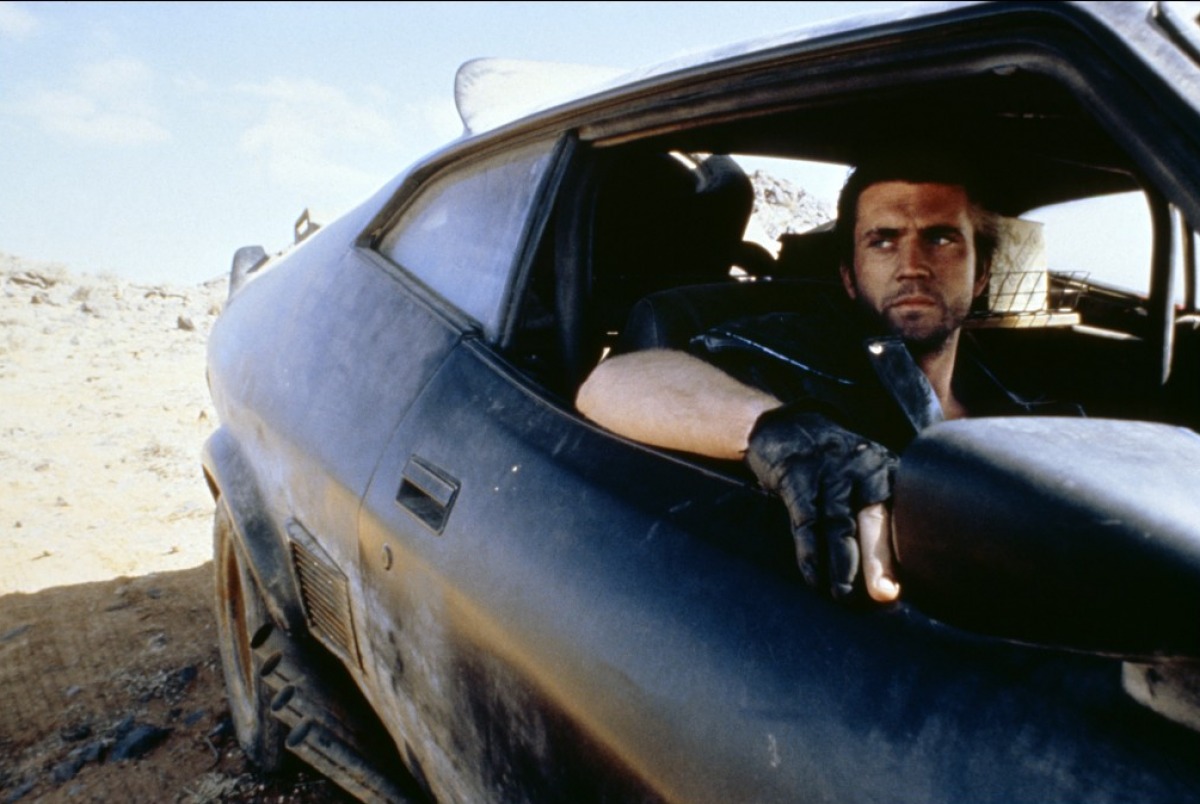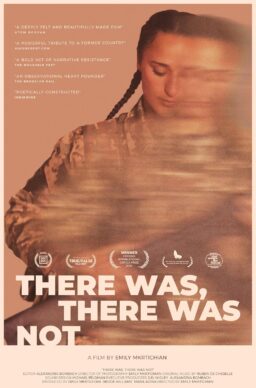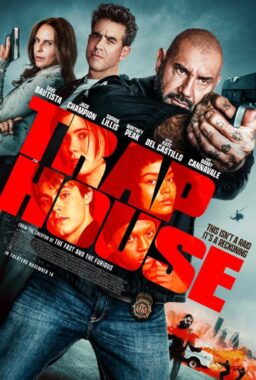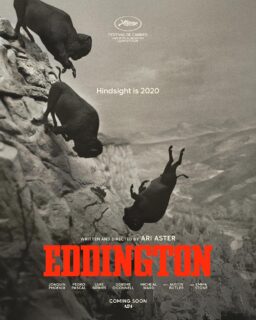If you
were to gather a group of disparate film lovers together and ask them which of
this year’s upcoming releases they were most genuinely excited to see, you
would probably get a number of different answers. Some might say
“Tomorrowland” because of the air of mystery surrounding that project
and the estimable track record of director Brad Bird. Those whose tastes lean
more towards art house fare might suggest the equally mysterious latest
offering from Terrence Malick, “Knight of Cups.” Others would
probably cite “Star Wars: The Force Awakens,” even despite those
fairly sorry prequels. However, if there is one title out there with the
possibility to inspire across-the-board enthusiasm from moviegoers of all
stripes, it is the eagerly awaited “Mad Max: Fury Road.” For one
thing, the trailers alone have managed to squeeze in more visual and kinetic
excitement into their limited time frames than most conventional feature films
of late have been able to accomplish in theirs, while suggesting that they
comprise only the tip of the iceberg. For another, it features two of the most
exciting actors working today in Tom Hardy and Charlize Theron. Finally, and
most significantly, it marks the long-awaited continuation of one of the most
exciting of all film franchises 30 years after the release of its last
installment.
The
series was the brainchild of George Miller, an Australian who originally got
his start as an emergency room doctor in Sydney, a job that saw him treating
victims of all sorts of auto-related traumas. In 1971, while taking a summer
film class, he met budding filmmaker Byron Kennedy and together, they produced
the award-winning short “Violence in the Cinema, Part 1.” A few years
later, they, along with first-time screenwriter James McCausland, decided to
break into the local film industry, which was just beginning to make a name for
itself in the international market thanks to hits like “My Brilliant
Career,” with a low-budget action film. Although there were government
bodies designed to invest in local film production, Miller and Kennedy felt
that those groups would be disinclined to help fund an exploitation movie and
set about raising the funds themselves—they even earned money for the project
by going out on emergency medical calls with Kennedy driving and Miller tending
to the wounded. Eventually, they managed to raise about $350,000, a slight
budget under most circumstances and especially for one set in a dystopian
near-future that features a number of elaborate automotive stunts as its main
lure. Not only did this budget preclude the use of known actors, it meant that
with only two exceptions, the leather outfits donned by virtually all the key
characters were actually constructed of vinyl.

In the
film, the social order of Australia, and presumably the rest of the world, is
beginning to crumble due to a severe energy crisis. While civilization
continues on, marauding motorcycle gangs have begun to terrorize the population
and inspire the formation of the Main Police Force to patrol the roads of the
outback. As the story begins, one gang leader, Nightrider, kills a cop and
escapes, only to be pursued by ace MFP officer Max Rockatansky in a chase that
leads to his death. In response, Nightrider’s gang, the Acolytes, now led by
the equally vicious Toecutter, ramp up their orgy of destruction and even waylay
a young couple and rape the woman. (While most films of this type might have
lingered on the lurid details of the attack, Miller focuses more on the woman
afterwards—in a movie filled with physical carnage, her emotional devastation
is the most terrifying moment on display.)
Even
though one of the gang members was too stoned to leave the scene before the
arrival of Max and partner Goose on the scene, the punks get away with their
crimes because people are too terrorized to testify against them. Later, the
Acolytes attack Goose, burning him alive in his wrecked car and leaving him a
vegetable, a move that causes the disillusioned Max to leave the force to
retire to the country with his wife and infant son. Inevitably, the acolytes
return and when they rob Max of the things that are most precious to him, he
finally snaps and, with the help of a 1973 Ford XB Falcon with a souped-up V-8
engine that is the fastest thing on the road, he goes off in pursuit of the
Acolytes and decimates them in a series of high-octane confrontations leading
to an especially nasty denouement that would be referenced nearly a
quarter-century later in “Saw.”

On paper,
“Mad Max” may not sound like much more than an automotive riff
on “Death Wish” with yet another normal man who is pushed too far and
who goes gunning in violent fashion for those who have destroyed his life.
However, what might have seemed to be utterly ordinary on the page proved to be
utterly extraordinary when brought to life through Miller’s eye. At the time of
its making, films featuring elaborate car chases and crashes were nothing
new—Hal Needham had pretty much carved a cottage industry out of them with
things like “Smokey and the Bandit” and “Hooper”—but
Miller approached them in such a unique manner, utilizing cameras mounted on
fenders, rapid-fire editing and a stunt crew that was apparently willing to do
anything in order to get a great shot (at one point, we even see a guy get hit
in the head with a motorcycle) that it
was as if he was presenting such things for the first time. Even the most jaded
action buffs could not believe what they were seeing—this was that rare bird
of an exploitation film that not only lived up to the promises of its trailer,
it exceeded them—and they were equally impressed by the intensely charismatic
unknown actor at its center, newcomer Mel Gibson (who, the story goes, only
went to the audition to support a friend, Steve Bisley (who was cast as Goose),
and was showing the results of a drunken brawl he had gotten into the night
before).
Created
in near-obscurity, “Mad Max” became a massive hit throughout the
world and earned over $100,000,000 at the box office. Curiously, the only
country where it didn’t do well was America—after American-International
Pictures bought it for distribution, they were purchased by Filmways, who were
noticeably less enthused with it and dumped it into drive-ins and grindhouses
with little fanfare, though not before inexplicably choosing to poorly redub it
with American voices on the belief that local audiences would not be able to
understand those pesky Australian accents. (The current DVDs and Blu-Rays
include the original voices.) And yet, while it was not a success by any means,
those that did encounter it when it hit cable a few months after that botched
release were knocked out by it and it soon became a cult favorite. By that
time, Miller and Kennedy had already decided to make a follow-up but instead of
offering a mere rehash of what they had already been done, “The Road
Warrior” (known as “Mad Max 2” throughout the rest of the world)
saw them expanding on their original concept, both in terms of the action
set-pieces and in the concept of the antihero at its center, and had one of the
largest budgets in Australian film history (roughly $4,000,000) at their
disposal.

Following
a brief recap of the events of the previous film to set the stage for newcomers
(i.e. the American audience), we learn that a few years have elapsed, what
previously passed for civilization has succumbed to violent anarchy following
nuclear warfare and gasoline has become a virtually priceless commodity that
people will kill for in order to keep their vehicles moving. Max, known as the
Road Warrior, roams the outback in his car looking for fuel when he eventually
comes across a community of survivors housed in a former refinery that contains
precious petroleum. They want to leave for what they are convinced will be a
better life on the coast but are under constant threat from a violent
motorcycle gang, led by the maniacal Humungus (Kjell Nilsson), who want all of
their gas for themselves and who will kill anyone who tries to slip past them.
At first, the burned-out Max has no interest in helping them beyond finding
them a truck rig that will allow them to transport their fuel in exchange for a
fill-up but after he is once again waylaid and left for dead, he returns to
help drive their gasoline to safety in a final flight to freedom that finds him
fending off the relentless attacks of Humungus and his men.

As good
as “Mad Max” was, “The Road Warrior” managed to improve
upon it in virtually every imaginable area. Forsaking the revenge conceit of
the first film, Miller and co-writers Terry Hayes and Brian Hannant chose this
time around to tell a more overtly mythological story (a point further
accentuated by having it framed as a story being recounted many years after the
events occurred rather than in the here and now) that contained overtones of
that most mythic of film genres, the Western. Intriguingly, this is
accomplished not by transforming its once-ordinary main character into an
almost superhuman being (as was the case with the Clint Eastwood character in
the Sergio Leone spaghetti westerns) but by presenting Max first as a mythic
conceit and having him gradually transform over the course of the story into
someone more closely resembling the human being that he was when we first met
him.
This is a smart move because considering all
the wild characters—including the Gyro Captain (Bruce Spence) who becomes
Max’s ally, the unnamed Feral Kid (Emil Minty) who wields a mean,
finger-severing boomerang and bonds with the mysterious stranger and the
Warrior Woman (Virginia Hey), one of the toughest of the good guys and one who
defies genre expectations by not becoming Max’s lover, not to mention Humungus
and his hordes—and situations, the film needs something solid at its center to
keep everything from flying off the tracks into complete chaos.
It would
seem almost impossible for anyone to improve on the automotive antics seen in
“Mad Max” but Miller manages to somehow do just that with a string of
action beats that remain mesmerizing more than 30-odd years down the line and
which are all the more impressive for having been pulled off in the days before
CGI came along to bring the wildest flights of visual fancy to life. (The
climactic stunt involving the tanker truck flipping over was deemed so
dangerous that it is alleged that the stuntmen involved were not allowed to eat
up to 12 hours before shooting in case they needed to be rushed immediately
into surgery if things went wrong.) Right from the start, the action is
relentless and because of the ingenious decision to shoot many of the scenes in
overwhelming closeups taken from within the speeding cars rather than from
medium shots taken from a safe distance and edit them in a form of rapid-fire
montage that would prove to be ahead of its time, the film had a visceral
effect that set it apart from most other examples of the genre, then and now.
At the
same time, Miller was not interested in giving viewers easy thrills in which
the violence has been anesthetized to the point where it has no meaning. When
people die here—whether they are otherwise anonymous players or more central
characters such as the Warrior Woman or the lover of Wez (Vernon Wells),
Humungus’s chief enforcer—their deaths have real meaning for characters who
can still recall what it once meant to be civilized and are not just casual
adds to the body count. This, when all is said and done, is what separated
“The Road Warrior” from the legions of violent post-apocalyptic car
crash movies that would emerge in its wake and it is why it has stood the test
of time while all the knockoffs have faded into well-deserved obscurity.
Already a
hit around the world when it finally appeared in America in the summer on 1982,
a period that saw the release of such instant and eventual classics as
“E.T.,” “Blade Runner,” “The Thing,” “Star
Trek II,” “Poltergeist” and “Tron,” “The Road
Warrior” proved to be a hit here as well and landed Miller his first
Hollywood gig when an impressed Steven Spielberg hired him to direct one of the
segments of the eagerly awaited “Twilight Zone-The Movie” and while
that film was not the hit that it was expected to be, largely because of the
tragedy surrounding its production, Miller’s hyper-kinetic take on the old
episode “Nightmare at 20,000 Feet” got enough attention to ensure
that he could do virtually anything he wanted for his next project. For a
while, it seems that he was noodling around with a “Lord of the
Flies”-style story about a tribe of children in a post-apocalyptic future
who are found by an adult who becomes their unexpected savior until it was
decided that this could form the basis of a third “Mad Max” film with
Max as the savior.

Titled “Mad Max Beyond Thunderdome,”
tragedy struck the production early on when Byron Kennedy was killed in a
helicopter crash during a location scout and this may be why Miller decided to
split the directorial duties with George Ogilvie—he would handle the action
sequences while Ogilvie would direct the more dramatic scenes. The other big
difference this time was that for the first time in the series, there would be
a well-known star in the cast other than Gibson—musical icon Tina Turner,
still in the flush of her celebrated comeback, was hired to co-star, her first
dramatic role since her appearance as The Acid Queen in “Tommy” a
decade earlier.
Set
fifteen years after the events of “The Road Warrior,” Max is crossing
the desert in a wagon when he is attacked by a pilot (Bruce Spence, playing a
different character from the Gyro Captain) and his son and has his possessions
stolen. He tracks them down to a place called Bartertown, a community where
visitors trade their meager possessions and which is fueled by a crude refinery
that runs on pig droppings. The town is the creation of ruler Aunty Entity
(Turner) but the all-important refinery is the possession of the dwarf Master
(Angelo Rossitto) and he, with the help of hulking bodyguard Blaster (Paul
Larsson) is challenging her for control. Max strikes a bargain with Entity to
defeat Blaster in Bartertown’s preferred realm of conflict resolution, a duel
to the death inside Thunderdome (imagine a homicidal Cirque de Soleil act), in
exchange for the return of his possessions but when he learns that neither she
nor Master/Blaster are what they initially seem to be, he refuses and is exiled
to the desert and certain death as punishment.
He is rescued by a group of children,
survivors of a plane crash who were left behind by adults trying to find
civilization and who are convinced that he is the plane’s captain returned to
fix the craft and lead them to safety. Max tries to convince them that there is
nothing else out there but when some of them decide to take off anyway, he goes
off in pursuit with some of the remaining kids. With nowhere else to go and
with no supplies, they all head off to Bartertown to rescue Master and escape
through a truck that is the key component of the power generator, inspiring
Entity and her men to give chase.
For
years, “Mad Max Beyond Thunderdome” has been considered the weakness of the trilogy, decrying it for lacking the relentless
kinetic energy of the first two films, the presence of the kids in need of
rescuing, what they felt was the gimmicky casting of Tina Turner and a
PG-13 rating that promised less
brutality than in the previous installments. This is crazy because rather than
being a lazy cash-grab sequel, this is an enormously ambitious film that tries
to give viewers something new instead of rehashing what they had seen before.
This time around, Miller and co-writer Terry Hayes offer viewers an expanded
view of the dystopian world that they have created and its inhabitants through
the ingenious Bartertown, a place that alternately comes across as both
fantastic and eminently plausible. The scenes involving the kids are arguably
the talkiest in the entire franchise but Miller and Ogilvie present them in a
way so that they become a group worth rooting for without ever becoming too
cutesy or cloying for their own good.

As Aunty Entity, Turner is an undeniably
striking presence and her character serves as another reminder that throughout
the series, Miller has always been interested in strong women who are not
solely defined by their sexuality. (Indeed, it is one of the dark, unspoken
jokes of the series that only in the wake of the apocalypse do racial and
gender barriers finally fall to the wayside.) As for the action sequences,
while it may be true that they lack the gruesome detail of the earlier films,
that doesn’t prevent it from presenting moviegoers with two of the most
exciting scenes in the history of the franchise—the Thunderdome brawl (one of
the cinema’s greatest fight scenes) and the jaw-dropping chase that takes up a
good chunk of the film’s final third and contains stunts that you cannot
believe anyone would even propose, let alone execute.
Ending
with a final shot of Max, his humanity now more or less restored for good by
helping the children to safety, heading off alone into the sunset, “Mad
Max Beyond Thunderdome” felt at the time as though it would be the final
word on the character as its principal players moved on to other things. Miller
would direct “The Witches of Eastwick” and “Lorenzo's Oil”
and become an unexpected magnate of family films by producing the beloved
“Babe” and directing the even better “Babe: Pig in the
City” and the animated hits “Happy Feet” (for which he won the
Oscar for Animated Feature film in 2006) and “Happy Feet Two“. Gibson would parlay his superstar success into a directorial career that would
include such hits as “Braveheart” (for which he won Oscars for Best
Picture and Director) and “The Passion of the Christ” before a series
of well-documented personal troubles would largely drive him from the
limelight. During this time, there were the occasional rumors of a fourth
“Mad Max” film, and, in 2001, “Fury Road” was set to go into
production with both Miller and Gibson but was postponed in the wake of 9/11
and cancelled outright a couple of years later due to difficulties in
international filming after the outbreak of the Iraq War. While Gibson moved
on, the dream never died with Miller (at one point, he even contemplated doing
it as a 3-D animated film) and finally, he was able begin shooting in 2012.
Whether “Fury Road” will prove to
have been worth the wait remains to be seen but, contrary to Tina Turner’s
theme song from “Mad Max Beyond Thunderdome,” we need another hero on
the big screen now more than ever—one that can stand out amongst the flood of
oddly costumed superheroes that are all the rage these days. Having more than
delivered the goods three times before, Miller and his creation will hopefully
be able to fit that bill once more and give moviegoers something that lives up
to the high bar set by its predecessors while simultaneously thrilling a new
generation of viewers.












